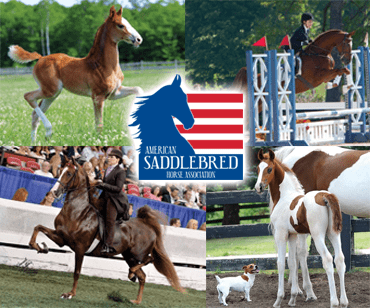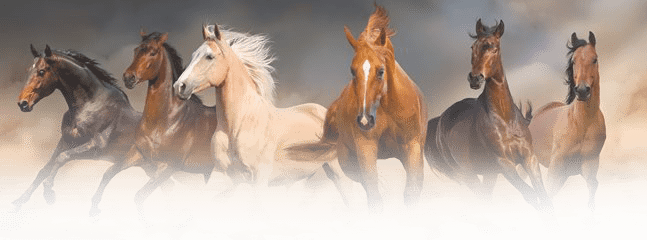Racehorses are remarkable athletes with a unique combination of speed, stamina, and agility. They are bred specifically for their physical abilities, and their training is carefully designed to maximize their performance on the track. Race Horses can provide an intriguing character analysis example. However, the science of speed doesn’t stop at the surface level. In order to truly understand the genetic and environmental factors that contribute to high-performance racehorses, we need to dive deeper into their biology and training techniques.
The Genetic Makeup of a Champion Racehorse
The foundation of a high-performance racehorse lies in its genetics. Breeding and genetics play a crucial role in determining a horse’s speed, stamina, and overall athletic ability.
The Role of Selective Breeding in Racehorse Genetics
For centuries, selective breeding has been used to develop and refine horse breeds for specific uses. This process involves carefully choosing which horses to breed based on their physical traits and performance history. By doing so, breeders can enhance desirable characteristics and eliminate undesirable ones.
In the case of racehorses, breeders are usually looking to produce offspring that have a combination of speed, stamina, and agility. This is achieved by breeding horses with similar characteristics and performance records.
One of the most famous examples of selective breeding in racehorses is the development of the Thoroughbred breed. Thoroughbreds were originally bred in 17th and 18th century England for the purpose of horse racing. Breeders carefully selected horses with the desired traits of speed and agility, resulting in a breed that is still used for racing today.
Key Genetic Traits for Speed and Stamina
When it comes to a horse’s genetic makeup, there are certain traits that are considered essential for high-performance racing. These traits include a strong cardiovascular system, a powerful musculoskeletal system, and an efficient respiratory system.
Additionally, horses with a certain type of muscle fiber called Type 2B are better suited for short, fast sprints, while horses with Type 1 muscle fibers are better suited for long, sustained efforts. These factors all play a role in determining a horse’s ability to perform well on the track.
Another important factor in racehorse genetics is the horse’s bloodline. Certain bloodlines are known for producing horses with exceptional speed or stamina, and breeders often look to these bloodlines when selecting horses for breeding.
The Future of Genetic Engineering in Racehorse Development
Advances in genetic engineering hold promise for racehorse breeding in the future. Scientists are exploring the use of gene editing to enhance desirable traits and eliminate undesirable ones. While this technology is still in its early stages, it has the potential to change the face of horse breeding and racing in the years to come.
However, there are also concerns about the ethical implications of genetic engineering in horse breeding. Some worry that it could lead to the creation of “designer horses” that are bred solely for their performance capabilities rather than for their well-being as living creatures.
Despite these concerns, many in the horse racing industry are excited about the potential that genetic engineering holds for improving the performance of racehorses. As technology continues to advance, it will be interesting to see how it is used in the world of horse breeding
and racing.
The Science Behind Racehorse Training
In addition to genetics, the way a racehorse is trained also plays a significant role in its performance on the track. Training techniques are designed to enhance a horse’s speed, stamina, and agility.
The Importance of a Horse’s Early Years
A racehorse’s training begins at a young age. In fact, much of a horse’s early training is focused on building a strong foundation for future success. This includes developing strong bones and muscles, as well as establishing mental resilience and trust between the horse and its trainer.
Training Techniques for Speed and Endurance
There are a variety of training techniques used to improve a horse’s speed and endurance. Interval training, in which the horse alternates between periods of moderate and intense exercise, is one example. Another technique is hill training, which focuses on improving a horse’s cardiovascular and musculoskeletal systems by running up and down hills.
The Role of Nutrition in Racehorse Performance
A horse’s diet is another important factor in enhancing its performance. An optimal diet for a racehorse is one that provides all the necessary nutrients, vitamins, and minerals needed for optimal health. Hydration is also crucial, as dehydrated horses may experience muscle fatigue and poor performance on the track.
The Anatomy of a High-Performance Racehorse
A horse’s physical anatomy is uniquely adapted to its role as a racehorse. Each system of the body plays a crucial role in a horse’s performance on the track.
Musculoskeletal System and Its Impact on Speed
The musculoskeletal system is responsible for a horse’s movement and posture. In order for a horse to run at high speeds, it needs strong, flexible muscles and powerful bones and joints. Regular exercise and proper nutrition are crucial for maintaining a healthy musculoskeletal system.
The Respiratory System: Maximizing Oxygen Intake
The respiratory system is responsible for delivering oxygen to the horse’s body during exercise. This is essential for maintaining high levels of endurance. In order to maximize oxygen intake, horses take in large volumes of air with each breath, and their lungs are capable of exchanging gasses very quickly.
The Cardiovascular System: Fueling the Racehorse’s Engine
The cardiovascular system is responsible for delivering oxygen and nutrients to the horse’s muscles during exercise. A healthy cardiovascular system is essential for maintaining high levels of stamina and endurance. A horse’s heart is particularly well-adapted to its role as a racehorse, capable of pumping large amounts of blood very quickly.
The Mental Aspect of Racing: Developing a Winning Mindset
Finally, the mental aspect of racing is essential for developing a winning racehorse. A horse’s mindset can be just as important as its physical abilities in determining its success on the track.
The Role of Temperament in Racehorse Performance
A racehorse’s temperament is shaped by early experiences and training techniques. Horses that are well-trained and accustomed to their surroundings are more likely to perform well on the track. Additionally, horses that are calm and focused under pressure are more likely to succeed in races.
Training Techniques for Mental Toughness
There are a variety of training techniques used to improve a horse’s mental toughness. These include exposing the horse to various sights and sounds to help it become more comfortable with unfamiliar environments, as well as teaching the horse to focus on the task at hand, even in
the midst of distractions.
The Importance of a Strong Bond Between Horse and Trainer
Finally, a strong bond between a horse and its trainer is essential for success on the track. Horses that trust and respect their trainers are more likely to follow commands and perform well under pressure.
Conclusion
High-performance racehorses are the result of a complex interaction between genetics, training techniques, and environmental factors. Understanding the science behind speed is important not only for racing enthusiasts but also for those who are interested in the biology of animal performance. By delving into the genetics and training techniques behind high-performance racehorses, we can gain a greater appreciation for the remarkable athleticism of these amazing animals.





















